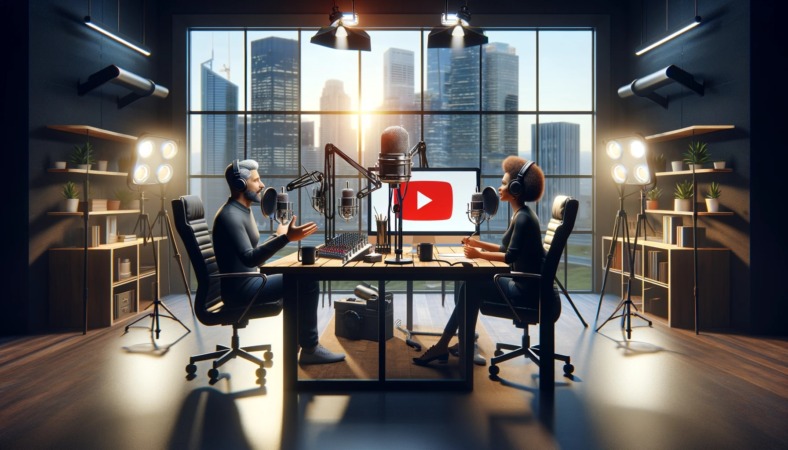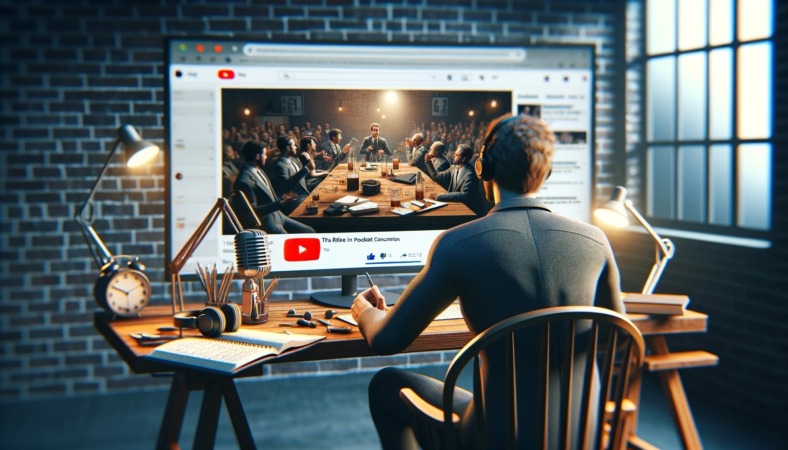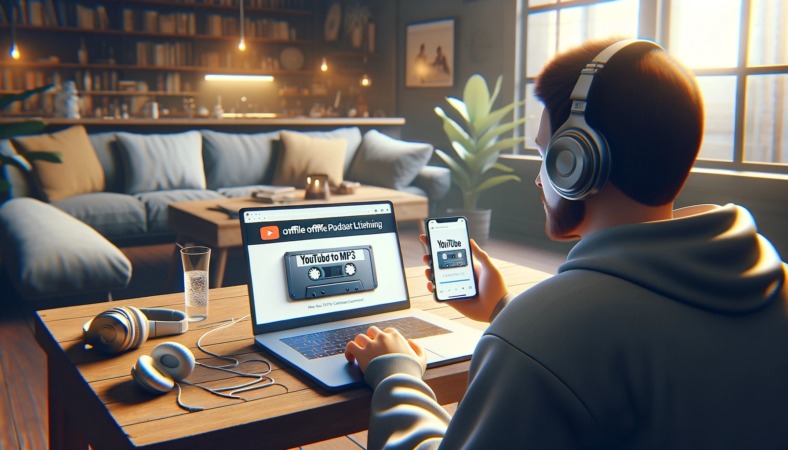
The Surge in Offline Podcast Listening
In recent times, we’ve seen a boom in the realm of podcasts and YouTube, reshaping our content consumption habits. These platforms have evolved from being mere parts of our digital routine to revolutionizing how we engage with media. Amidst this transformation, the trend of offline listening has picked up steam, celebrated for its ease and reach. This piece explores the critical role video converters are playing in this changing scene, making content more reachable than ever.
The Podcast wave
From Niche to Mainstream
Podcasts have journeyed from the edges to the heart of mainstream media. Once the domain of enthusiasts, they’ve blossomed into a rich field of narrative, learning, and fun, drawing in a vast and varied audience.
YouTube’s Podcast Pioneering
Beyond the traditional, audio-centric podcast platforms, YouTube has stepped up as a key hub for podcasting. It brings podcasts to life with a visual layer, boosting engagement and broadening access. Thanks to YouTube’s enormous audience and savvy recommendation system, podcasters have found a new frontier to expand their listener base, reshaping the podcasting world.
Evolving Listening Patterns
How we tune into podcasts is morphing. The live listen is giving way to the on-demand podcast, driven by listeners’ hunger for content that meshes with their timetable and tastes. YouTube’s flexible, choose-your-own content approach is pivotal in this shift, gifting listeners the liberty to curate their podcast experiences.
The rise of podcasts and YouTube as content consumption giants marks a pivotal shift in our digital media landscape. With offline listening becoming increasingly crucial, converters step up as indispensable tools, letting us dip into our preferred content without a hitch, anywhere and anytime. This move towards offline accessibility signals a broader change in media, laying the groundwork for future innovations and ways we engage with content.
The Role of YouTube in Podcast Consumption
YouTube’s Podcast Niche
YouTube has carved a special niche in the podcast landscape. It’s not all about the ears here; the platform’s visual dynamics add an entirely new dimension to podcast enjoyment. Beyond the sound, YouTube boosts viewer interaction through comments and likes, fostering a more engaging experience. Its widespread accessibility across different devices cements its place as a top pick for podcast lovers.
Streaming’s Sticky Points
Despite its upsides, streaming on platforms like YouTube carries its own set of challenges. Data consumption can hit hard, especially for those on limited data plans. Moreover, the dependency on constant internet connectivity can be limiting, particularly in areas with spotty service or during travels.
The Need for Offline Listening
The Upside of Offline Listening
This is where the magic of offline listening comes into play. The benefits of downloading podcasts are vast. It offers the flexibility to enjoy your favorite shows anytime, sidestepping the need for internet access. It’s also a significant data saver and ensures a smooth, uninterrupted listening experience, free from buffering woes.
Crucial Moments for Offline Access
There are key times when having podcasts available offline proves invaluable. During travel, particularly on flights or in remote locales with scant internet access, downloaded podcasts become a treasure trove of entertainment and insight. In places plagued by unreliable internet, offline podcasts ensure your listening journey is seamless and enjoyable.
Blending YouTube’s rich, interactive podcast experience with the liberty of offline access allows listeners to enjoy the best of both worlds—the engaging content of YouTube podcasts with the convenience and reliability of offline enjoyment.
Converters: Bridging the Gap
Understanding Converters
Converters, particularly those that turn YouTube content into MP3 files, are digital tools designed to transform streaming media into downloadable files. These gadgets enable users to strip the audio from YouTube videos, crafting MP3 files for effortless offline listening.
Converters at Work: Enhancing Offline Podcast Enjoyment
Utilizing converters is a cinch. Pick a YouTube video—maybe a podcast episode—and the converter turns it into an MP3 for you. This lets you dive into your podcast favorites anytime, anywhere, sans internet.
Navigating Legal and Ethical Waters
While the convenience of converters is clear, it’s vital to tread carefully around legal and ethical lines. The legality of these tools can differ greatly depending on where you are and the copyright specifics of the content you’re converting. Ethically, pondering the impact on creators and the broader content landscape is key.
User Perspectives and Trends
From the User’s Perspective
For many, converters are a lifeline for podcast consumption. Picture a commuter who downloads episodes to make a subway journey more enlightening. These everyday snapshots underscore how integral converters have become to our daily media habits.
The Evolution of Offline Listening
The drift towards offline listening is picking up pace. As mobile data costs climb and the quest for constant, seamless access grows, more folks are leaning on converters. This shift underlines a swelling demand for content that’s not tethered to live streams.










